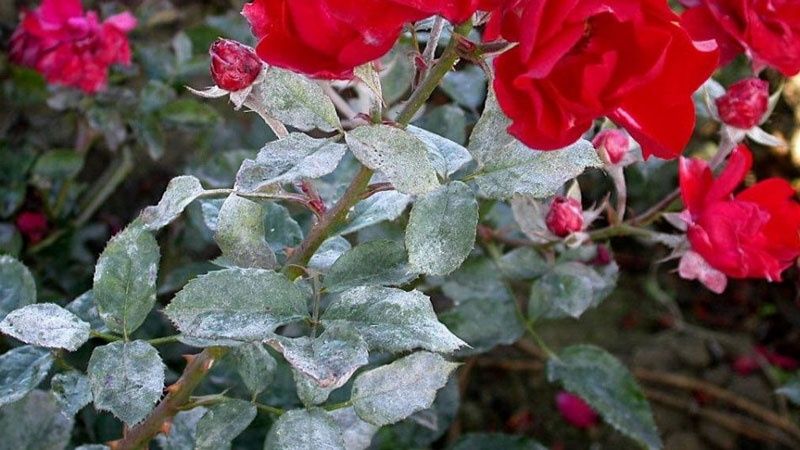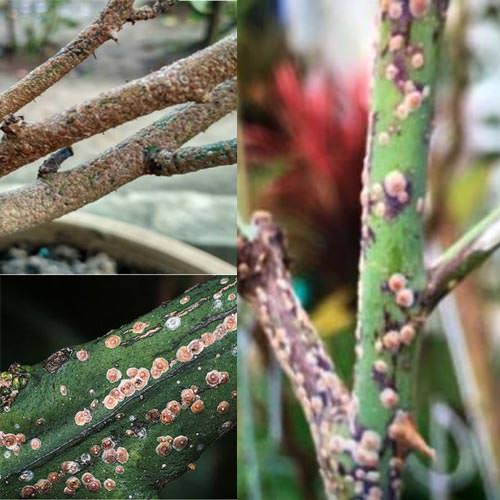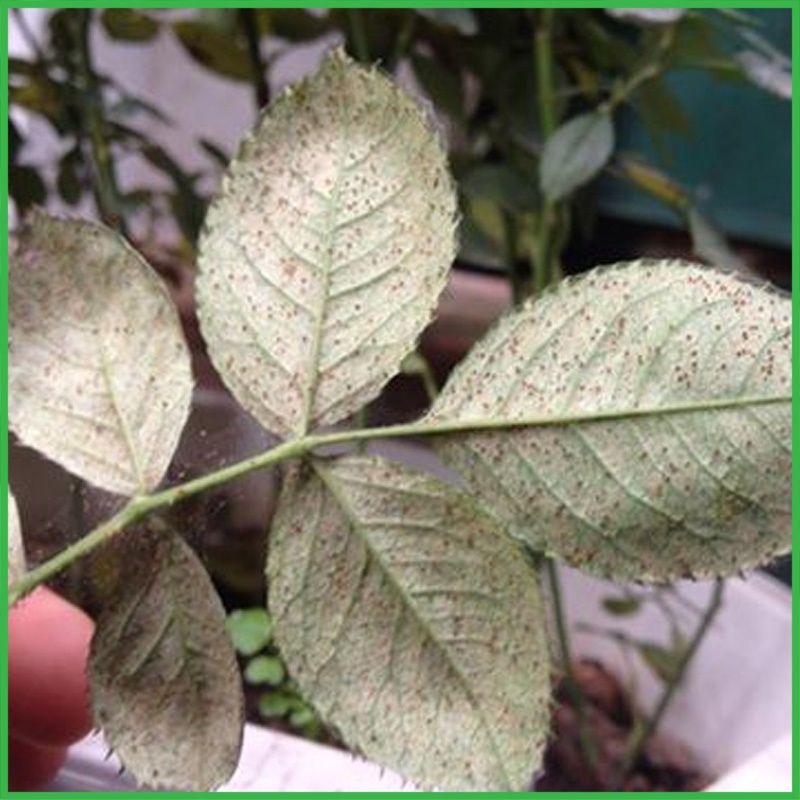Roses are beloved for their elegant beauty and sweet fragrance. However, to maintain healthy and vibrant rose bushes, you’ll need to know the common diseases that can affect them. Here are 10 common rose diseases and how to effectively prevent them.
1. Black Spot
- Symptoms: Black spots appear on leaves, starting from older leaves and gradually spreading to younger ones.
- Cause: Caused by a fungus.
- Prevention: Prune affected leaves and spray with a fungicide regularly.

2. Powdery Mildew
- Symptoms: A white powdery coating appears on leaves, causing stunted growth.
- Cause: Caused by a fungus.
- Prevention: Prune affected leaves and spray with a sulfur-based fungicide.

3. Rust
- Symptoms: Small, reddish-brown spots appear on the underside of leaves, eventually spreading to the entire leaf.
- Cause: Caused by a fungus.
- Prevention: Prune affected leaves and spray with a specialized fungicide.

4. Cane Blight
- Symptoms: Dark, sunken cankers appear on canes, branches, and leaves.
- Cause: Caused by a fungus.
- Prevention: Prune affected canes and spray with a copper-based fungicide.
5. Black Cankers
- Symptoms: Plants become weak, wilt, produce few or no flowers, and flowers die quickly. The stem develops brown or red spots or streaks, which then turn black. The blackening spreads from the inside out. Leaves wither, dry, and fall off. Branches dry from the tip down to the base and die.
- Cause: Caused by fungi that enter the plant through cuts, wounds, or weak buds. The fungus blocks the plant’s vascular system, hindering respiration, photosynthesis, and nutrient absorption.
- Prevention: Water appropriately, take care when pruning, spray with fungicides and use biological agents.

6. Yellow Leaf Disease
- Symptoms: Leaves turn yellow and drop off.
- Cause: This can be caused by various factors such as nutrient deficiencies, pests, or unfavorable environmental conditions.
- Prevention: Ensure proper fertilization, control pests, and provide optimal growing
Downy Mildew
- Symptoms: Rose leaves curl, and develop small yellow or light gray spots. Spots gradually turn brownish-purple and spread rapidly. Over time, a thick gray mold forms underneath the spots, causing leaf decay and defoliation.
- Cause: Caused by the fungus Peronospora sparsa, which thrives in humid conditions.
- Prevention: Prune infected branches, avoid waterlogging, and spray with fungicides and biological agents.

8. Gray Mold
- Symptoms: Small gray spots appear on flower buds or flowers, then spread downward. Infected buds will not open, turn dark, and fall off. Infected flowers will wilt, dry, and fall off. Leaves will curl, turn yellow, and fall off.
- Cause: Caused by the fungus Botrytis cinerea.
- Prevention: Use biological or chemical fungicides.
9. Aphids
- Symptoms: Leaves become distorted, yellowed, and sticky due to honeydew produced by aphids.
- Cause: Caused by sap-sucking insects.
- Prevention: Use insecticidal soap or a strong stream of water to dislodge aphids.

10. Spider Mites
- Symptoms: Small yellow spots appear on leaves, followed by yellowing and leaf drop.
- Cause: Caused by tiny mites that suck sap from leaves.
- Prevention: Increase humidity around plants and use a miticide.

Note:
- Prevention is key: Regular inspection of your rose bushes can help detect problems early.
- Integrated pest management: Combine cultural practices, biological controls, and chemical treatments for effective pest management.
- Follow label instructions: Always read and follow the instructions on pesticide labels.
By following these tips, you can help ensure your rose bushes stay healthy and beautiful.

ANH TU INTERNATIONAL PLASTIC CO., LTD
Manufacturer Address: Ma Se Area, Dinh Tu Vlg, Can Huu Com, Quoc Oai Dist, Ha Noi, Vietnam
Phone number: +84 345140088 (WhatsApp, WeChat)
Mail: sale4@anhtu.vn
Web: www.anhtu.vn




